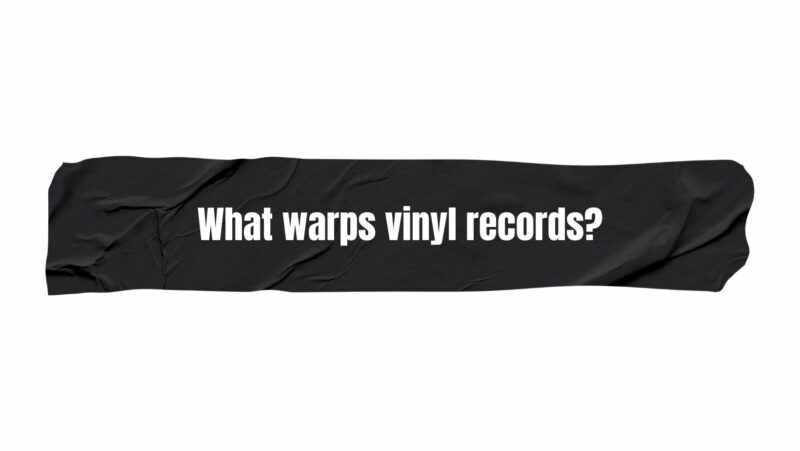Vinyl records, with their nostalgic charm and unparalleled sound quality, have experienced a remarkable resurgence in recent years. Collectors and music enthusiasts alike treasure these physical artifacts as windows into the past. However, maintaining the integrity of vinyl records can be a challenge, with warping being one of the most dreaded outcomes. This article delves deep into the various factors that contribute to vinyl record warping, shedding light on the mechanisms behind this phenomenon.
The Anatomy of Vinyl Records
Before exploring the causes of warping, it’s essential to understand the structure of a vinyl record. A vinyl record consists of grooves that store analog sound information. These grooves are etched into a vinyl disc, which is typically made from polyvinyl chloride (PVC) material. The shape and alignment of these grooves are crucial to accurate sound reproduction. Any distortion or deformation can lead to a compromised listening experience.
The Science of Warping
Vinyl record warping is the result of changes in the record’s shape, causing it to deviate from its original flat state. When a record warps, the stylus encounters uneven surfaces, leading to playback issues such as skips, distortion, and reduced sound quality. To understand why warping occurs, it’s important to explore the factors that influence the physical properties of the vinyl material.
Heat and Temperature Fluctuations
One of the primary culprits behind vinyl record warping is heat. Vinyl records are sensitive to temperature changes because the PVC material has a relatively low melting point. Exposure to high temperatures, whether direct sunlight or proximity to heat sources, can soften the vinyl and cause it to warp over time. Even relatively short exposure to heat can lead to irreversible damage.
Temperature fluctuations exacerbate the problem. Rapid changes between hot and cold environments cause the vinyl to expand and contract unevenly, leading to stress on the material and potentially causing warping. To prevent warping due to heat, records should be stored in a cool, stable environment away from direct sunlight and heat sources.
Humidity and Moisture
Humidity is another significant factor contributing to vinyl record warping. High levels of humidity can cause the vinyl material to absorb moisture, making it more pliable and prone to distortion. The absorbed moisture can also lead to the growth of mold and mildew, further damaging the record. Conversely, low humidity levels can cause the vinyl to become brittle and prone to cracking.
Maintaining a controlled humidity level, ideally between 40% and 50%, is crucial for preserving the integrity of vinyl records. Storing records in a dry environment and using dehumidifiers in areas with high humidity can help prevent warping caused by moisture.
Improper Storage and Handling
The way vinyl records are stored and handled plays a significant role in their susceptibility to warping. Storing records upright and vertically is essential to distribute the weight evenly across the disc and prevent warping over time. Stacking records horizontally can lead to pressure on the lower records, causing deformation.
Additionally, mishandling records by gripping them tightly or applying pressure to the grooves can lead to warping. Records should always be handled by their edges, and the center label should be avoided when holding them.
Vinyl Quality and Manufacturing
The quality of the vinyl material itself and the manufacturing process can influence a record’s susceptibility to warping. Records made from lower-quality vinyl or those with manufacturing defects are more prone to warping. Records with uneven thickness, air bubbles, or other imperfections are more likely to deform under stress.
Conclusion
Preserving the integrity of vinyl records and preventing warping is essential for maintaining the authentic and nostalgic listening experience that enthusiasts cherish. While vinyl records are resilient, they are not immune to the factors that can lead to warping. Heat, temperature fluctuations, humidity, improper storage, handling, and manufacturing defects all contribute to this phenomenon.
Collectors and enthusiasts must adopt best practices to ensure their vinyl records remain in optimal condition. Storing records in a cool, dry environment, keeping them upright, and handling them with care are fundamental steps. Monitoring temperature and humidity levels can also significantly reduce the risk of warping. By understanding the science behind vinyl record warping and taking proactive measures to prevent it, collectors can continue to enjoy the beauty of vinyl records for generations to come.


